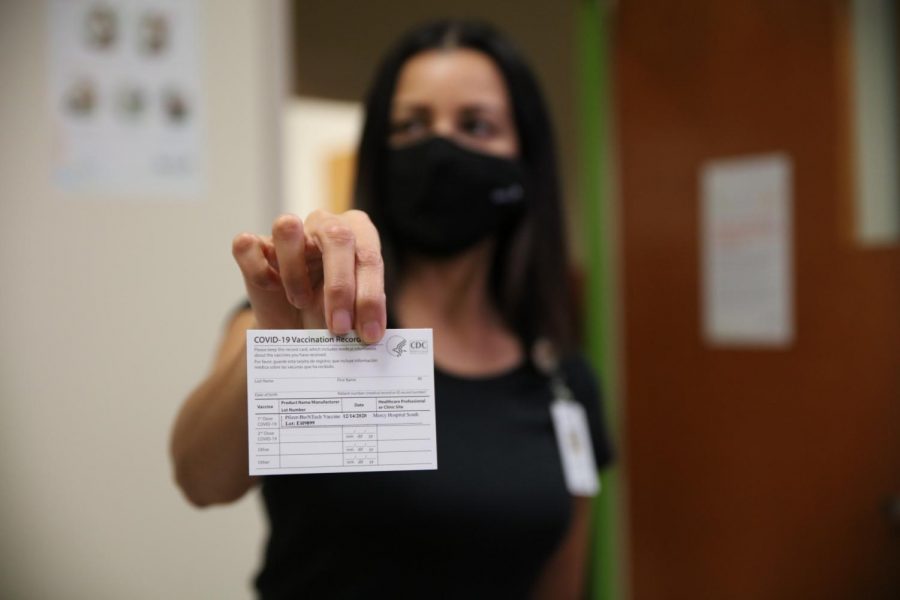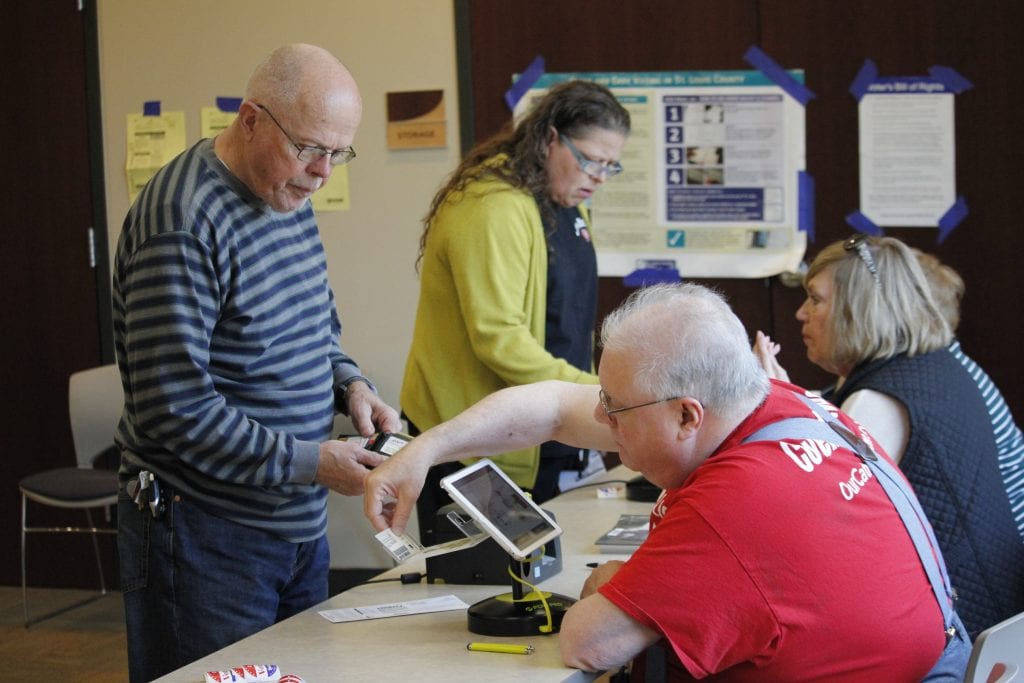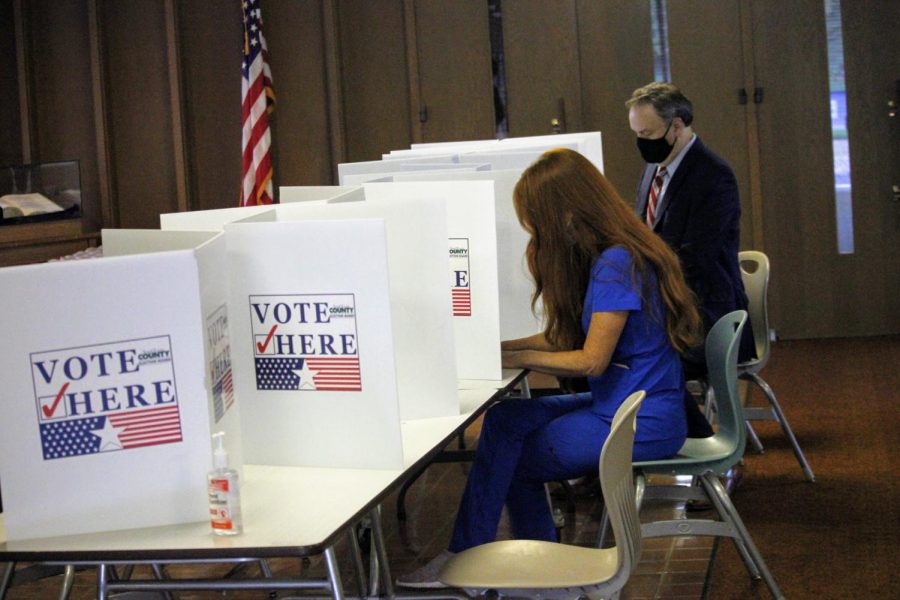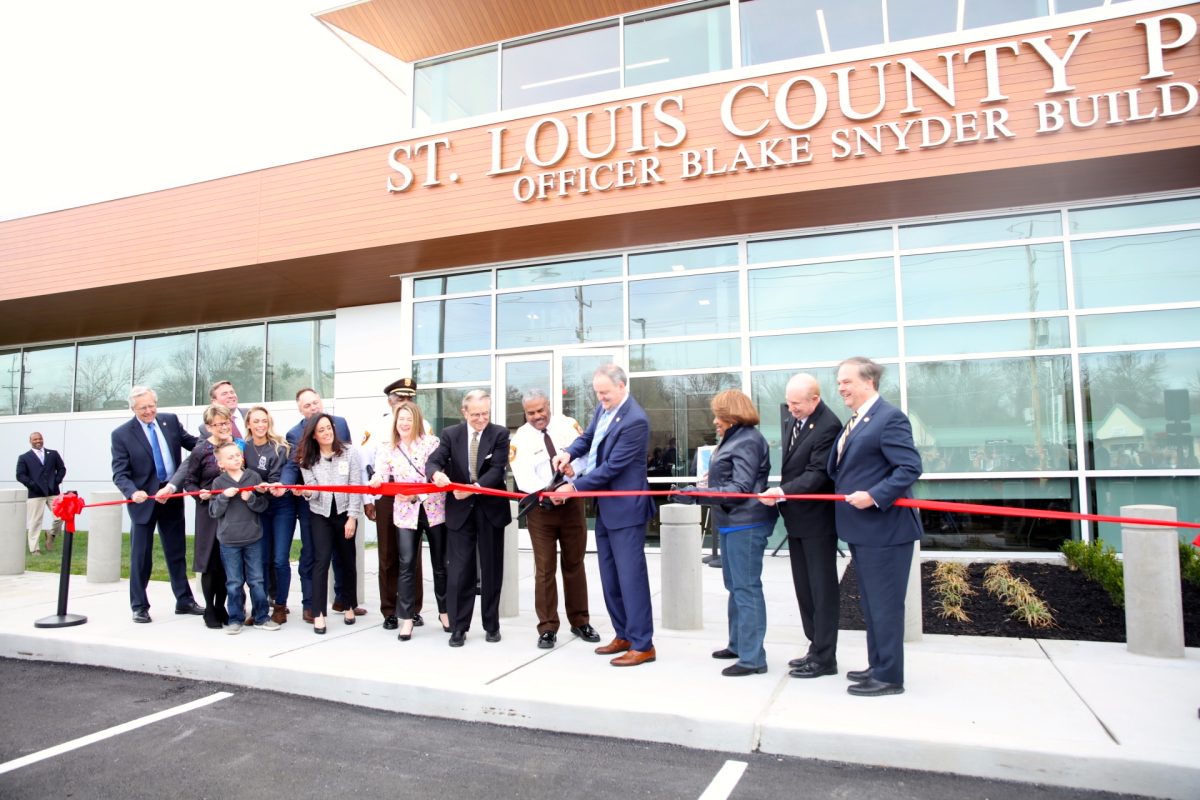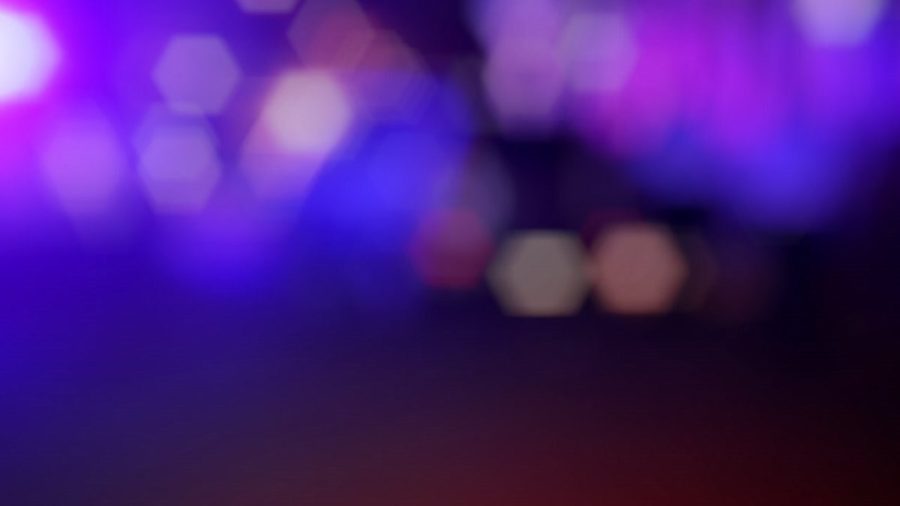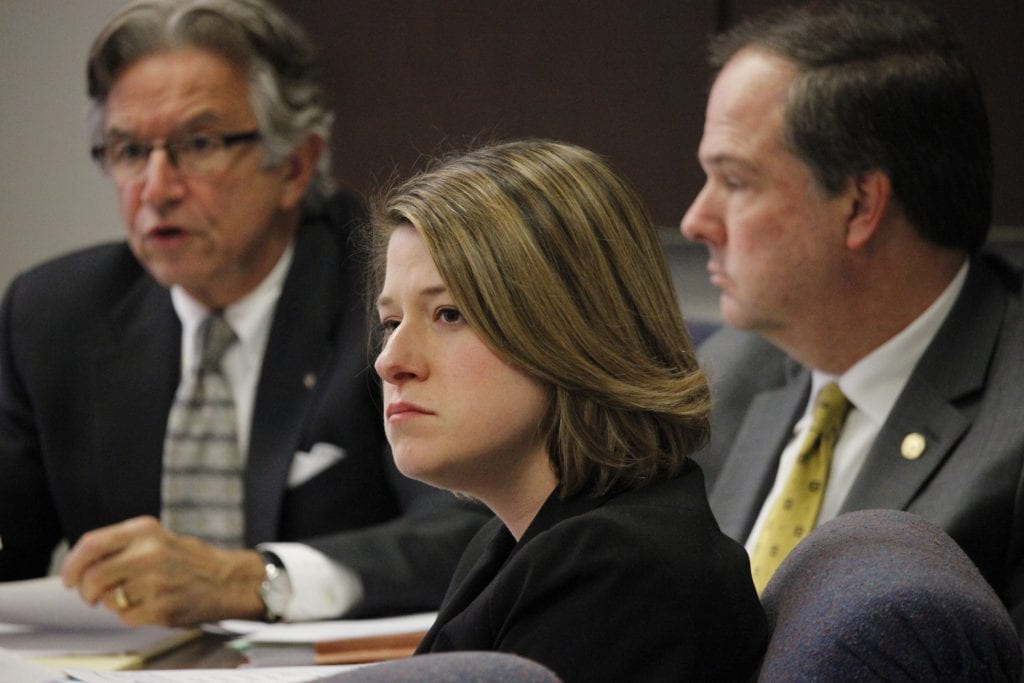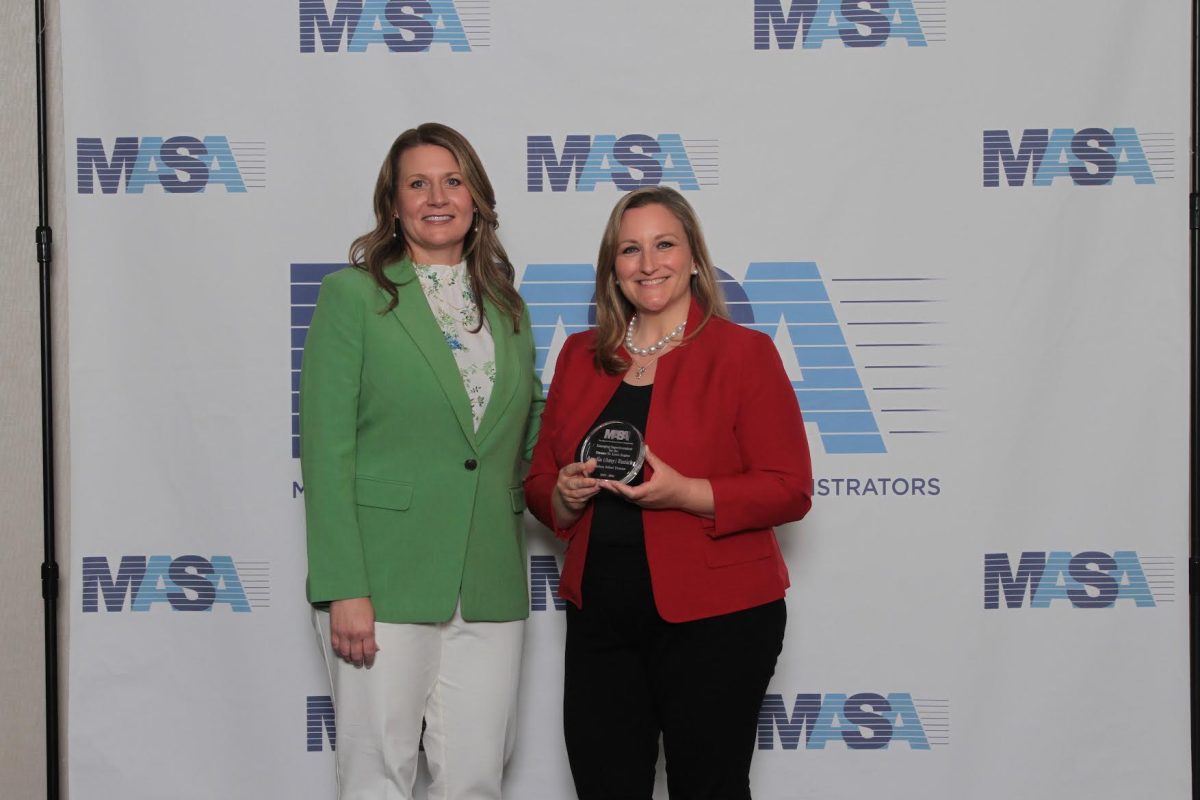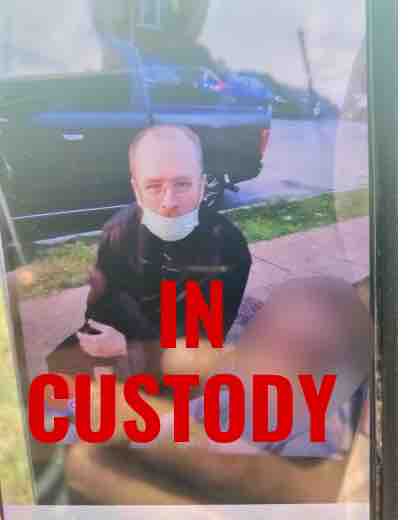The state of Missouri has been told it will not receive another shipment of Johnson & Johnson’s vaccine until the last week of March — two weeks after the next tier of eligible residents will be opened.
The unexpected news, which was announced on a weekly call with vaccine providers Tuesday, means the initial shipment of 50,000 doses of Johnson & Johnson’s vaccine received this week will be the only shipment Missouri receives until the week of March 29.
The state still anticipates at least about 120,000 doses of Moderna and Pfizer’s vaccine each week.
“What we thought at the beginning of this week is a little bit different now,” Ted Delicath, a principal with the McChrystal Group, a Virginia-based consulting firm hired to advise the state’s response to the pandemic, told vaccinators Tuesday.
“We thought we were going to present you this slide and explain, ‘Hey we’ve had about 120,000 give or take average vaccine for the last three or four weeks. And we have been told and promised J&J’s going to change that.’ Well, the reality’s a little bit different,” Delicath said.
A spokeswoman for DHSS confirmed Wednesday that the state was previously notified the initial shipment of Johnson & Johnson’s vaccine wouldn’t continue as a weekly allocation until late March.
Meanwhile, starting next week the state plans to start allocating about 15 percent of its weekly allocation of vaccine to pharmacies. Pharmacies were previously lumped into the “community providers” category — and made up a majority of those providers, Delicath said.
Two weeks later during the week of March 22, Delicath said the state will shift away from its strategy of allocating doses based on a region’s overall population and instead will start allocating based on the remaining population eligible to receive the vaccine.
Delicath said the state doesn’t intend to allow the delay in Johnson & Johnson shipments to delay its plan to allow teachers, childcare providers, grocery store workers and other critical infrastructure employees to be eligible for vaccine March 15.
“So that’s the unideal update on Johnson & Johnson and here’s how it changes how we will approach the rest of March,” he said. “Knowing that we are just working with 120,000 vaccines, we are not going to let that deter us from what the governor announced last week in activating Tier 3 of Phase 1B.”
Tier 3 is expected to add an additional 550,000 Missourians to the 3 million already eligible.
While delivery channels, like hospitals and local public health departments, will see increased amounts of doses shipped each week, those doses will not just be for residents eligible within Tier 3, Delicath said.
Adam Crumbliss, the director of DHSS’ Division of Community and Public Health, told vaccinators he understands some counties may be farther along in vaccinating eligible residents than others.
But if communities are looking at prioritizing populations to vaccinate — like those 65 years and older or with certain underlying health conditions — it can’t be at the exclusion of the newly eligible residents. Essentially, providers should not exclusively move through one tier at a time — and instead work through all three.
“So for example, we don’t want to be in a circumstance where you as a county make the determination that you’re not moving into the 1B Three population,” Crumbliss said, although targeted events to specific populations will likely be needed.
The state’s shift to allocating vaccine based on the number of eligible residents will be informed by analyses conducted for the state by Deloitte Consulting, Delicath said. The allocations of the state’s initial shipment of Johnson & Johnson’s vaccine were also informed by Deloitte data, Delicath said. Crumbliss said the state is working to make the data available to providers.
Deloitte’s analyses from Feb. 8 through 22 repeatedly found Missouri’s urban centers have the largest “vaccination gap” — the estimated number of eligible residents who still haven’t received their first dose of the COVID-19 vaccine.
Meanwhile, Deloitte’s analyses also found rural counties in Missouri’s southwest region tended to be the areas with the lowest percentage of eligible residents vaccinated.
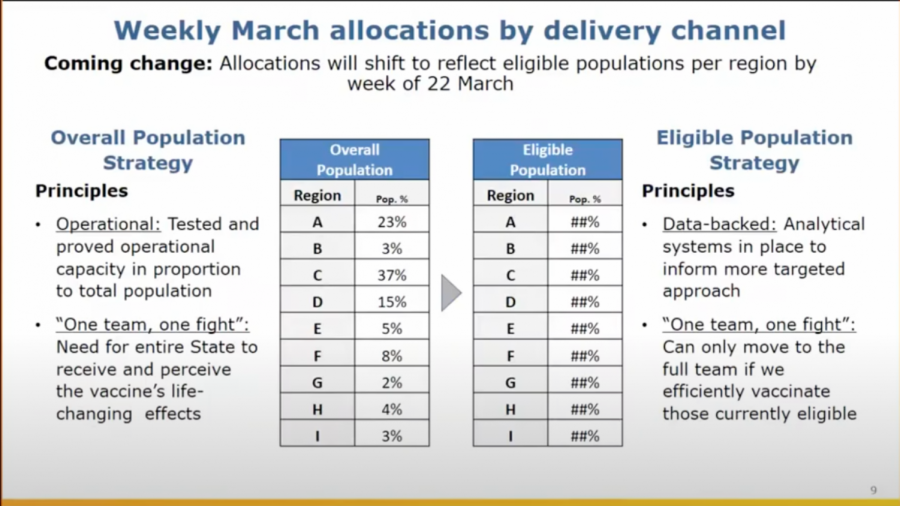
Delicath told providers that the overall population strategy “has served us well” and proved that regions can handle and push out large amounts of vaccine in proportion to their population.
“From a state standpoint, we wanted to make sure that everybody in the state, from communities in the north, south, east and west, saw the effects — and the life-changing effects — of vaccine,” Delicath said.
However, the new method will be more targeted by looking on a weekly basis at the total unvaccinated eligible population for each region. That will allow the state to respond to areas that may be lagging behind, Delicath said.
“And to be very specific about that, those are the people that need the vaccine. And so that’s how, we believe, when we’re being fair and equitable how allocations should reflect,” Delicath said. “Because it becomes general and imprecise if we’re just sending vaccines based on overall population.”
The state’s distribution model faced renewed calls for change after multiple mass vaccination events in rural areas had hundreds of unused doses at the end of the day last week. In one county, 143 doses went to waste.


















